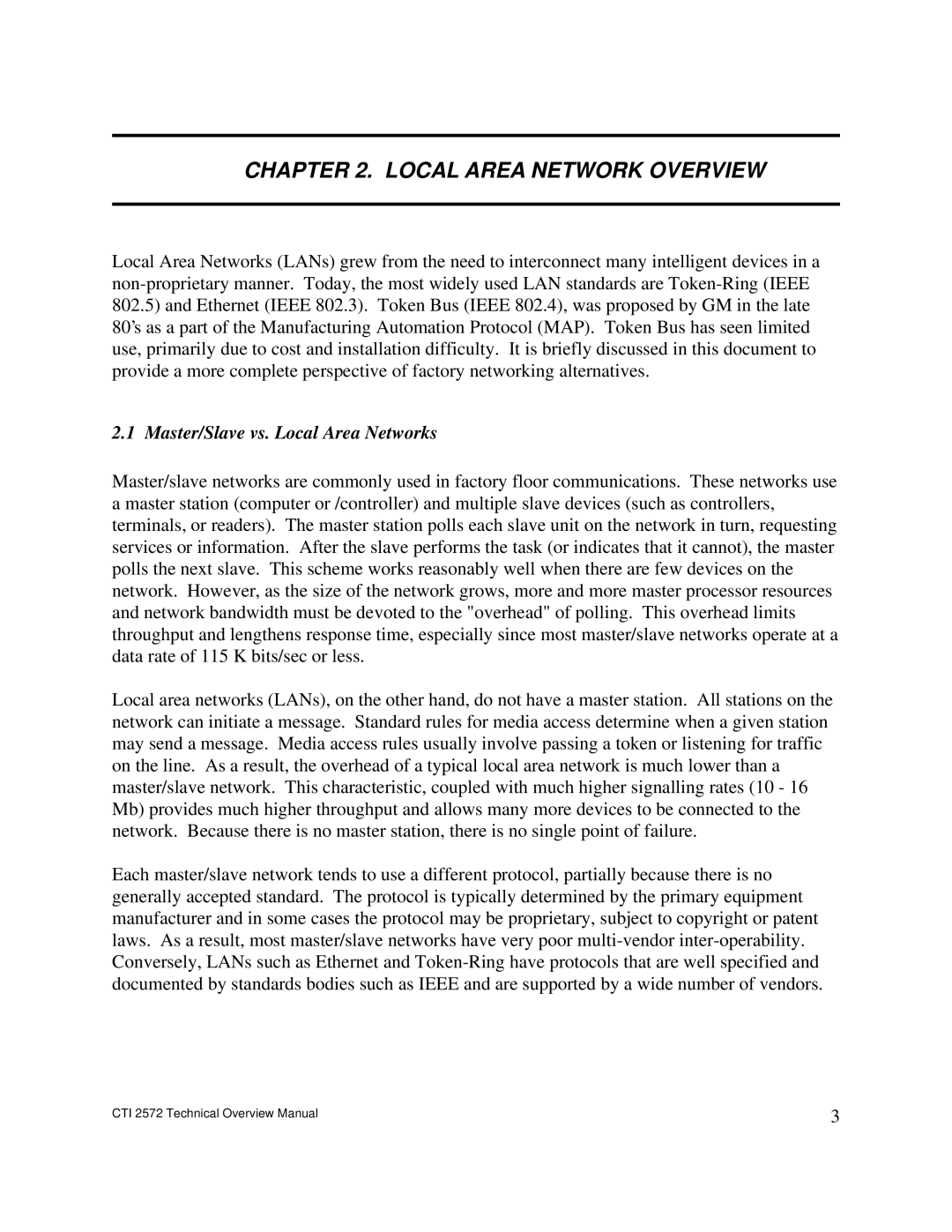
CHAPTER 2. LOCAL AREA NETWORK OVERVIEW
Local Area Networks (LANs) grew from the need to interconnect many intelligent devices in a
2.1 Master/Slave vs. Local Area Networks
Master/slave networks are commonly used in factory floor communications. These networks use a master station (computer or /controller) and multiple slave devices (such as controllers, terminals, or readers). The master station polls each slave unit on the network in turn, requesting services or information. After the slave performs the task (or indicates that it cannot), the master polls the next slave. This scheme works reasonably well when there are few devices on the network. However, as the size of the network grows, more and more master processor resources and network bandwidth must be devoted to the "overhead" of polling. This overhead limits throughput and lengthens response time, especially since most master/slave networks operate at a data rate of 115 K bits/sec or less.
Local area networks (LANs), on the other hand, do not have a master station. All stations on the network can initiate a message. Standard rules for media access determine when a given station may send a message. Media access rules usually involve passing a token or listening for traffic on the line. As a result, the overhead of a typical local area network is much lower than a master/slave network. This characteristic, coupled with much higher signalling rates (10 - 16 Mb) provides much higher throughput and allows many more devices to be connected to the network. Because there is no master station, there is no single point of failure.
Each master/slave network tends to use a different protocol, partially because there is no generally accepted standard. The protocol is typically determined by the primary equipment manufacturer and in some cases the protocol may be proprietary, subject to copyright or patent laws. As a result, most master/slave networks have very poor
CTI 2572 Technical Overview Manual | 3 |
